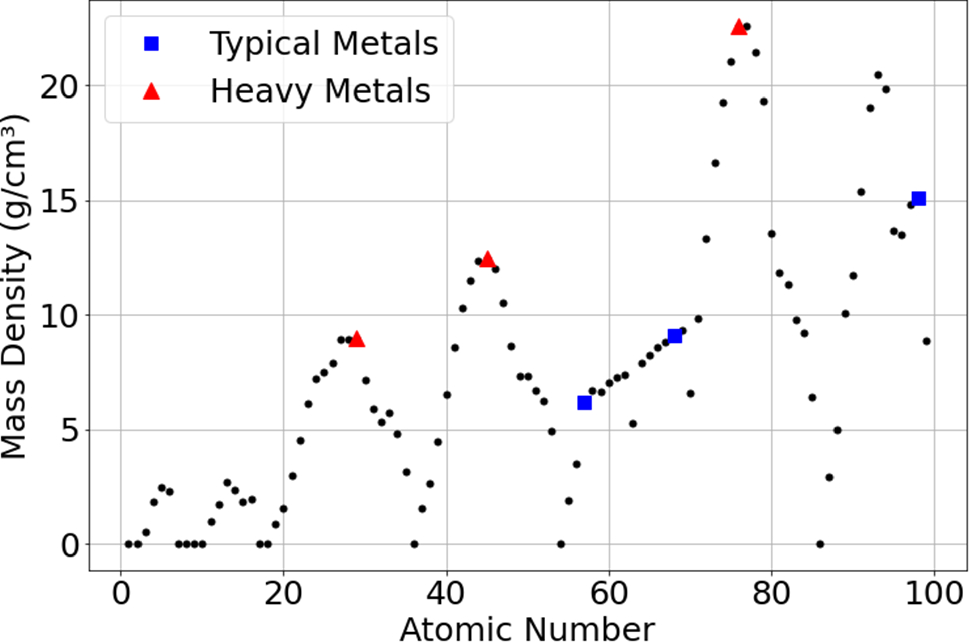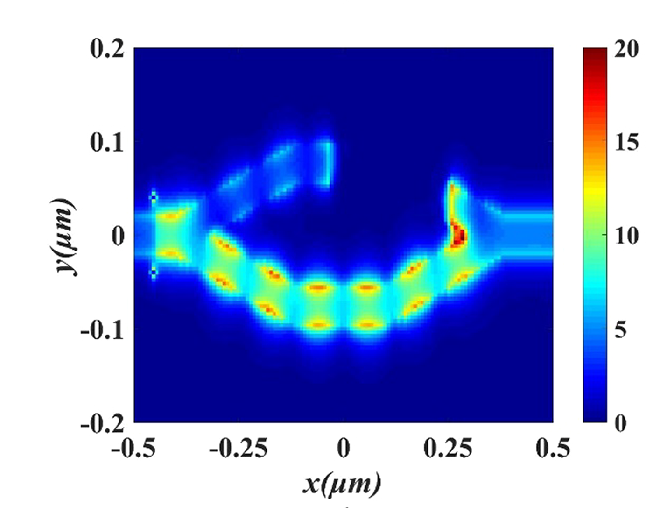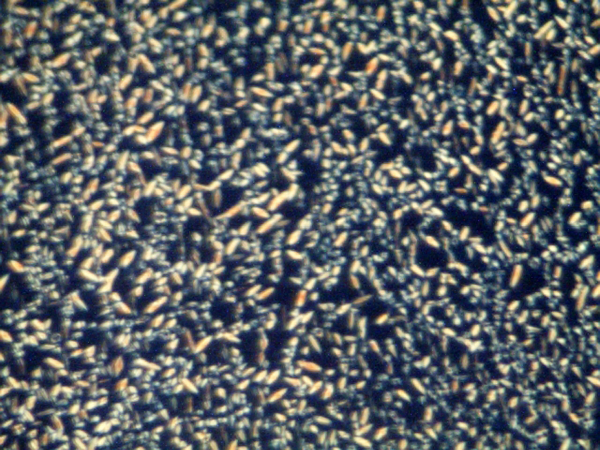News
EPJ E Topical Issue: Novel Molecular Materials and Devices from Functional Soft Matter
- Details
- Published on 03 November 2023

Guest Editors: Jean-Marc Di Meglio, Aritra Ghosh, Orlando Guzmán, P. Lakshmi Praveen.
This Topical issue focusses on soft matter materials and devices. Soft matter can be defined by a large response to weak external perturbations, with physical properties governed by local internal dynamics. It may contain ordered structures at mesoscopic scales, but appear disordered at molecular scales. Because of this, the ordered and disordered aspects of soft matter can be combined to manufacture innovative and original functional materials and devices. The most ambitious course of action is then to develop multi-functional materials and devices that exploit two or more rheological, electrical, electronic, photo-physical, quantum chemical or opto-electronic responses of soft matter. Solving grand challenges for new generations of functional materials demands. The aim of this Topical Issue is to provide an inspiring platform for the dissemination of the latest developments and discoveries in the design, simulation, modeling, synthesis, construction and characterization of soft matter structures for functional materials and devices. The emphasis of this Topical issue is on physical methodologies and characterizations to resolve multi-disciplinary issues.
All articles of this collection are available here and are freely accessible until 31 December 2023. For further information read the Editorial.
EPJ H Highlight – Would Matrix Mechanics Win Recognition Today?
- Details
- Published on 31 October 2023

A re-evaluation of contributions to the development of quantum mechanics suggests that a belated Nobel Prize was a product of its times.
Albert Einstein, best known for his work in relativity, won the Nobel Prize for his formula for the photoelectric effect, which often surprises modern physicists. He’s not the only physicist whose Nobel award misaligns with the winner's modern claim-to-fame. In a study published in EPJ H: Historical Perspectives on Contemporary Physics, John Heilbron of the University of California, Berkeley, USA, and Carlo Rovelli of Western Ontario University, Canada, analyze why the Nobel Prize in 1954 recognized Max Born’s interpretation of the quantum mechanical wave function, while ignoring his leadership in the development of matrix mechanics. The researchers conclude that assessments made by historical actors can serve as a barometer of the changing consensus of interpretations of quantum mechanics.
EPJ C: Emilian Dudas new Editor-in-Chief for Theoretical Physics III: Quantum Field Theory and Gravity - Fundamental and Formal Aspects
- Details
- Published on 31 October 2023

The publishers of The European Physical Journal C – Particles and Fields are pleased to announce the appointment of Professor Emilian Dudas as new Editor-in-Chief for Theoretical Physics III: Quantum Field Theory and Gravity - Fundamental and Formal Aspects, replacing Professor Kostas Skenderis as of 1 November 2023.
Emilian Dudas is Directeur de Recherche at CNRS at the Centre de Physique Théorique of Ecole Polytechnique in France, where he is also teaching at graduate level. He is working in String Phenomenology, String Theory and their applications to Particle Physics and Cosmology.
EPJ E Topical Issue: Quantitative AI in Complex Fluids and Complex Flows: Challenges and Benchmarks
- Details
- Published on 30 October 2023

Guest Editors: Luca Biferale, Michele Buzzicotti and Massimo Cencini.
The collection addresses open problems, challenges, and benchmarks for data-driven and equation-informed tools for data assimilation, prediction, (subgrid-scale) modeling, inpainting, classification, and (optimal) control of Eulerian and Lagrangian problems in complex flows.
The goal is to move from proof-of-concept to quantitative benchmarks and grand challenges, including scaling of algorithms and complexity of datasets.
The original research papers, presented in a colloquium format, focus on the latest experimental, theoretical, or computational advances and address the interpretability, superiority, and usability of data-driven tools when applied to realistic fluid dynamics problems in engineering, geophysics, biophysics, and other fields. Key topics covered include: (i) Modeling and controlling complex flows with data-driven methods. (ii) Prediction and data-assimilation of multiscale flows. (iii) Reconstruction, super-resolution of fluid flows with data-driven and physics-informed tools. (iv) Optimization of navigation and other tasks in complex flows. (v) Animal behavior in flows.
All articles of this collection are available here and are freely accessible until 27 December 2023. For further information read the Editorial.
EPJ Web of Conferences Highlight - EOSAM 2023: European Optical Society Annual Meeting
- Details
- Published on 23 October 2023

EOS Annual Meeting, EOSAM 2023, brought together photonics experts. The European Optical Society Annual Meeting, EOSAM, took place in Dijon, France from 11th to 15th September 2023, organized by the European Optical Society and La Société Française d'Optique.
EOSAM is a major international scientific conference covering all aspects of optics and photonics. It is attended by over 500 attendees: top researchers, key leaders, students, and industry experts.
As an integral conference on photonics in Europe, EOSAM has always provided a valuable opportunity for presenting and discussing work, stimulating contact between colleagues, from young researchers to seasoned experts. EOSAM is where research meets industry and education.
EPJ Web of Conferences Highlight - ECNS 2023: European Conference on Neutron Scattering 2023
- Details
- Published on 17 October 2023

The 8th edition of the ECNS conference took place from 20th to 23rd of March 2023, at the TUM Department of Mechanical Engineering and at the new Science Congress Center Munich, both located in the immediate vicinity of the Heinz Maier-Leibnitz Zentrum (MLZ) at Garching, Germany.
The conference brought together the community of neutron scientists from Europe, but also from America, Asia and Australia. Many new and exciting topics and developments stimulated lively scientific discussions in a vibrant and constructive atmosphere.
EPJ Plus Highlight - Beyond the Periodic Table: Superheavy Elements and Ultradense Asteroids
- Details
- Published on 09 October 2023

Predictions of the behaviour of super-heavy elements that have not yet been observed on Earth may help explain the properties of dense asteroids further motivating potential asteroid miners.
Some asteroids have measured densities higher than those of any elements known to exist on Earth. This suggests that they are at least partly composed of unknown types of ‘ultradense’ matter that cannot be studied by conventional physics. Jan Rafelski and his team at the Department of Physics, The University of Arizona, Tucson, USA, suggest that this could consist of superheavy elements with atomic number (Z) higher than the limit of the current Periodic Table. They modelled the properties of such elements using the Thomas-Fermi model of atomic structure, concentrating particularly on a proposed ‘island of nuclear stability’ at and around Z=164 and extending their method further to include more exotic types of ultra-dense material. This work has now been published in EPJ Plus.
EPJ D Highlight - Creating optical logic gates from graphene nanoribbons
- Details
- Published on 09 October 2023

A new graphene-based optical logic gate uses collective oscillations of electrons to process light waves in a far smaller space than existing designs. The device also benefits from low information loss and high stability.
Research into artificial intelligence (AI) network computing has made significant progress in recent years, but has so far been held back by the limitations of logic gates in conventional computer chips. Through new research published in EPJ D, a team led by Aijun Zhu at Guilin University of Electronic Technology, China, introduce a graphene-based optical logic gate, which addresses many of these challenges.
EPJ E Highlight – Toward a Fast-Switching Liquid Crystal
- Details
- Published on 09 October 2023

Combining a bulky chain with a stable polymer can enhance liquid crystal performance
From laptop screens to navigation systems, liquid crystals are ubiquitous in modern life. These materials flow like liquids, but their molecules align with one another in a way that resembles the orientational order of a crystal. Electrically switching between different molecular orientations – or phases – in a liquid crystal changes how the material transmits light, hence their use/utility in visual displays.
In a study published in EPJ E, Ashok Kumar, of Jawaharlal Nehru Technological University, Kakinada, India, and his colleagues now report on a new design that adds a bulky chemical side chain to a polymer liquid crystal. The approach combines components that, separately, avoid optical degradation and enhance thermal stability; and could lead to improved switching speeds.
EPJ Plus Focus Point Issue: Progress in Medical Physics in Times of CoViD-19 and Related Inflammatory Diseases
- Details
- Published on 06 October 2023

Guest editors: E. Cisbani, S. Majewski, A. Gori, F. Garibaldi
COVID-19 is a systemic disease attacking the total body; one of the signatures of the disease is inflammation, an extremely complex phenomenon, in different parts of the body, that can benefit of a multidisciplinary imaging approach. Understanding inflammation is an important step for curing from COVID-19; its role must be understood, in particular for the strategies and technologies to be used against COVID-19, its consequences and potential future pandemics. Among the molecular imaging technologies that can play a central role is the Nuclear Medicine imaging. New advanced technologies that are under development could translate into increased sensitivity of early detection, avoiding the long-term side effects of inflammation. In this context, the Focus Point presents the most promising developments for more effective imaging in Nuclear Medicine. The intrinsic multidisciplinary and the related difficulty to address complex, specific, questions to the different scientific communities have been taken into account in the selection of the contributions, their scientifically sounding relevance and at the same time their capability to be understandable outside their reference discipline.




